Home>Garden Essentials>What Chemical Is In GMO Seeds
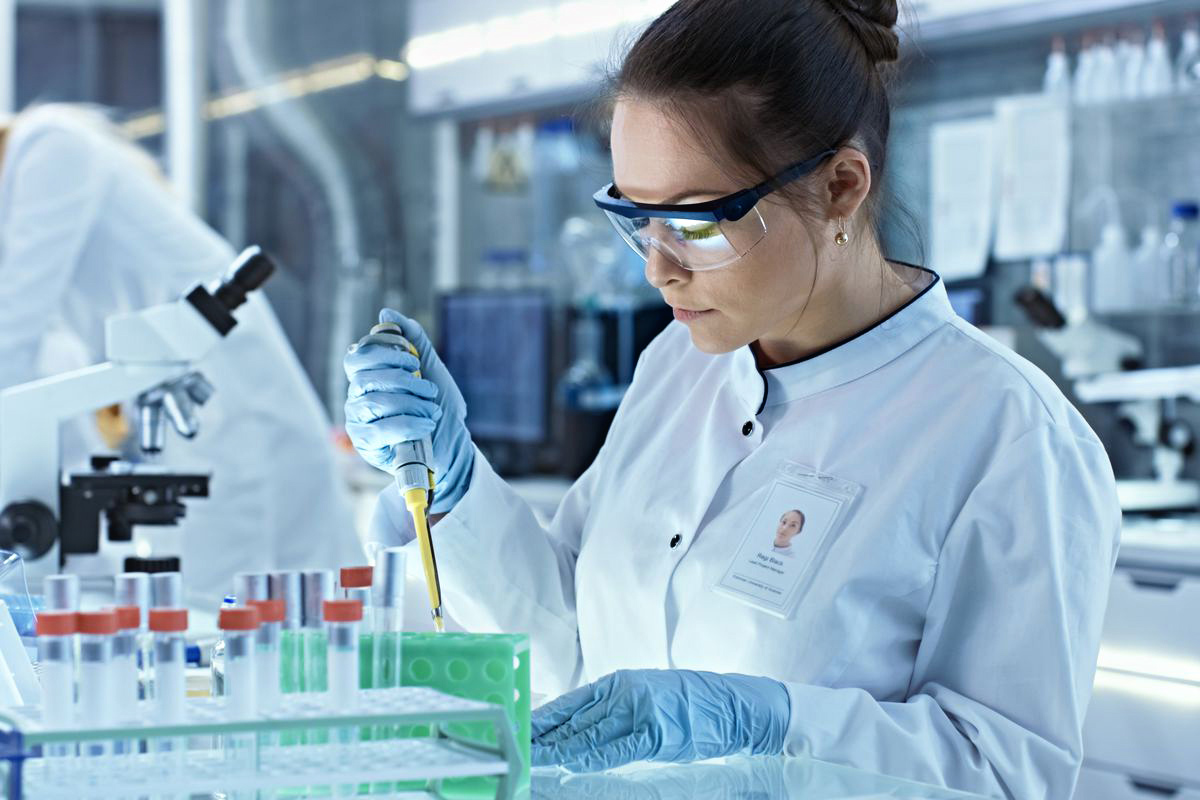

Garden Essentials
What Chemical Is In GMO Seeds
Modified: March 16, 2024
Want to know what chemical is in GMO seeds for your garden? Find out more about the ingredients and implications of using GMO seeds here.
(Many of the links in this article redirect to a specific reviewed product. Your purchase of these products through affiliate links helps to generate commission for Storables.com, at no extra cost. Learn more)
Introduction
Welcome to the world of GMO seeds! In today’s era, where technology and agriculture go hand in hand, GMO seeds have become a hot topic of discussion. GMO, or genetically modified organisms, refer to plants that have been altered using genetic engineering techniques to introduce specific traits or characteristics.
GMO seeds are designed to have improved traits such as resistance to pests, diseases, or herbicides, higher yields, and enhanced nutritional value. These genetically modified crops play a significant role in modern agriculture, helping farmers meet the rising demands of the growing population.
However, along with the benefits, GMO seeds also come with a fair share of concerns and controversies. One aspect that causes unease among consumers and environmentalists is the presence of specific chemicals in these genetically modified seeds. These chemicals are introduced into the plants during the genetic modification process and can have various impacts on human health and the environment.
Throughout this article, we will dive into the world of GMO seeds, discussing the common crops, the chemicals present in them, the controversies surrounding these chemicals, and the potential impacts on human health and the environment. By understanding the chemical composition of GMO seeds, we can make informed choices and contribute to the ongoing dialogue about their usage and regulation.
Key Takeaways:
- GMO seeds are genetically modified to have specific traits like pest resistance and enhanced nutrition. They contain chemicals like glyphosate and Bt toxin, which can raise health and environmental concerns.
- Regulatory oversight ensures the safety of GMO seeds through thorough assessments, labeling, and ongoing monitoring. It aims to protect human health, preserve biodiversity, and enable informed consumer choices.
Read more: What Are GMO Seeds
What are GMO Seeds?
GMO seeds, also known as genetically modified seeds, are plants that have been modified at the genetic level to exhibit specific traits or characteristics. This process involves the introduction of foreign genes from different organisms into the DNA of the plant, resulting in a plant with desired traits that are not naturally occurring.
The genetic modification of seeds is carried out in laboratories using advanced biotechnology techniques. Scientists identify the desired traits, such as resistance to pests, diseases, or herbicides, increased nutritional content, or improved yield potential. They then isolate the genes responsible for these traits and transfer them into the DNA of the target plant.
Genetic engineering allows for precise manipulation of the plant’s genetic makeup, enabling the incorporation of desired traits more quickly and efficiently than traditional breeding methods. The resulting GMO seeds possess the modified genetic material, which is then passed on to subsequent generations of plants.
GMO seeds offer several potential benefits to farmers and consumers. One of the primary advantages is increased productivity. By introducing traits like pest resistance, GMO crops can withstand attacks from insects, reducing the need for chemical pesticides. This leads to higher crop yields and lowers production costs.
Furthermore, GMO seeds can be engineered to have enhanced nutritional content. For example, biofortified crops may contain higher levels of essential nutrients such as vitamins or minerals, addressing nutrient deficiencies in certain regions of the world.
It’s important to note that genetically modified organisms are not a new phenomenon. Farmers have been selectively breeding plants for thousands of years to develop desired traits. However, genetic engineering accelerates the process by allowing the transfer of specific genes from one organism to another, including across species barriers that couldn’t be achieved through traditional breeding.
While GMO seeds have gained popularity in some regions, they have also faced criticism and concerns. Some worry about the potential environmental impacts of GMO crops, such as the unintentional spread of transgenes or the development of resistance in pests and weeds. Additionally, there are concerns regarding the long-term effects on human health, as well as issues of seed patents and the control of agricultural resources by biotechnology companies.
Throughout the rest of this article, we will explore the common GMO crops, the specific chemicals present in GMO seeds, the controversies surrounding them, and the potential impacts on human health and the environment.
Common GMO Crops
GMO crops are widely cultivated around the world, with an increasing number of crops being genetically modified to enhance their traits and address various agricultural challenges. These genetically modified crops can be found in fields, grocery stores, and even on our dinner plates. Let’s take a closer look at some of the most common GMO crops:
- Soybeans: Soybeans are one of the most widely grown genetically modified crops. The majority of soybeans produced today are genetically engineered to be herbicide-tolerant, meaning they can withstand the application of specific herbicides, allowing for more effective weed control.
- Corn: Genetically modified corn, also known as maize, is another prevalent GMO crop. Corn has been genetically modified to possess traits such as resistance to pests like the European corn borer and the ability to withstand herbicide applications. Additionally, GMO corn varieties with enhanced nutritional content, such as increased levels of important vitamins or amino acids, are also being developed.
- Cotton: Genetically modified cotton varieties are widely cultivated for their increased resistance to pests, particularly the cotton bollworm. These GMO cotton plants have been engineered to produce an insecticidal protein (Bt toxin) derived from the soil bacterium Bacillus thuringiensis, which helps protect the crop from pest damage.
- Canola: Canola, also known as rapeseed, is another important GMO crop. Genetic modification has allowed canola plants to be resistant to herbicides, making weed control more efficient during cultivation. Canola is primarily grown for its oil-rich seeds, which have several food and industrial applications.
- Papaya: In certain regions, genetically modified papaya has been developed to resist the devastating effects of the papaya ringspot virus. This genetic modification has helped to protect papaya crops from widespread destruction and has contributed to the sustainability of the industry.
- Apples: Some varieties of apples have been genetically modified to prevent browning when cut or bruised. This modification helps to maintain their visual appeal and freshness for longer periods, reducing waste and increasing consumer acceptance.
These are just a few examples of the common GMO crops that are commercially cultivated. Other genetically modified crops include sugar beets, alfalfa, squash, potatoes, and more. It’s essential to note that the availability and cultivation of genetically modified crops may vary by country and region due to differing regulatory frameworks and consumer preferences.
Now that we have a better understanding of the common GMO crops, let’s explore the specific chemicals present in GMO seeds and their potential implications.
Chemicals Present in GMO Seeds
GMO seeds not only possess modified genetic material, but they also contain specific chemicals that are introduced during the genetic engineering process. These chemicals play a crucial role in enhancing the traits of genetically modified crops. Let’s explore some of the primary chemicals present in GMO seeds:
- Glyphosate: Glyphosate is an herbicide that is commonly associated with genetically modified crops. It is the active ingredient in popular herbicides like Roundup. GMO crops such as soybeans and corn are engineered to be glyphosate-tolerant, meaning they can withstand applications of glyphosate-based herbicides, allowing for effective weed control without harming the crops.
- Bt Toxin: Bacillus thuringiensis (Bt) toxin is a naturally occurring insecticidal protein derived from a soil bacterium. It has been incorporated into the genetic makeup of certain GMO crops such as cotton and corn. The Bt toxin acts as a built-in pesticide, primarily targeting destructive pests like caterpillars and beetles. When these pests consume the GMO crop, the Bt toxin binds to their gut, causing toxicity and ultimately leading to their demise.
- Herbicide Resistance Genes: GMO seeds can also contain genes that confer resistance to specific herbicides. For example, some GMO soybeans, corn, and canola have been engineered with genes that enable them to tolerate herbicides like glyphosate or glufosinate. This allows farmers to effectively control weeds without damaging their crop.
- Other Traits: In addition to herbicide resistance and insecticidal properties, GMO seeds can be engineered with other traits that introduce chemicals into the plants. For instance, some genetically modified crops produce higher levels of certain nutrients, such as vitamins, minerals, or antioxidants. These nutritional enhancements can have potential benefits for human health.
It’s important to note that the presence of these chemicals does not necessarily imply harm or toxicity. The chemicals are introduced to provide specific benefits, such as improved pest resistance or enhanced crop productivity. However, the use of these chemicals and genetically modified crops has sparked debates regarding their potential impacts on human health and the environment.
In the next sections, we will explore the controversial herbicide glyphosate, the Bt toxin, and delve into the health and environmental concerns associated with the chemicals present in GMO seeds.
Glyphosate – The Controversial Herbicide
One of the most contentious chemicals associated with genetically modified crops is glyphosate, an herbicide that has been widely used in agriculture since the 1970s. Glyphosate gained significant attention when it became the active ingredient in Monsanto’s popular herbicide, Roundup.
Glyphosate works by inhibiting the activity of an enzyme called EPSP synthase, which is essential for the production of certain amino acids in plants. This inhibition leads to the death of targeted weeds, allowing for effective weed control and increased crop yield.
However, glyphosate has faced criticism and controversy due to its potential impacts on human health and the environment. Some studies have suggested a possible link between glyphosate exposure and health issues such as cancer, reproductive problems, and organ damage. Regulatory agencies around the world have produced conflicting assessments regarding the safety of glyphosate, leading to ongoing debates and calls for further research.
One of the primary concerns is the potential for glyphosate residues to remain on genetically modified crops, as well as on conventional crops where glyphosate is used as a herbicide. This has raised questions about the levels of glyphosate in food and its potential implications for human consumption.
Another issue is the development of glyphosate-resistant weeds, also known as superweeds. The widespread use of glyphosate has led to the emergence of weeds that have evolved resistance to the herbicide, requiring farmers to use stronger or alternative herbicides to combat these resistant weeds. This has contributed to an increase in overall herbicide use and the potential for the development of further herbicide resistance.
Efforts are being made to address these concerns. Regulatory agencies continue to reevaluate the safety of glyphosate, and research is ongoing to investigate its potential long-term effects on human health and the environment. Additionally, alternative weed management strategies, such as crop rotation, cover cropping, and integrated pest management, are being promoted to reduce reliance on herbicides.
It’s essential to note that glyphosate is not exclusive to genetically modified crops. It is also widely used in conventional agriculture and landscaping. However, its association with genetically modified crops, particularly glyphosate-tolerant crops, has brought it under scrutiny and intensified the debate surrounding its usage.
Overall, the controversy surrounding glyphosate highlights the necessity for thorough research, robust regulation, and continued monitoring of herbicides and their potential impacts. As the discussion continues, it is crucial to consider a balanced perspective that weighs the benefits of effective weed control against the potential risks associated with the use of glyphosate and other herbicides.
Now that we have explored the controversial herbicide glyphosate, let’s move on to another chemical commonly found in GMO seeds – the Bt toxin – and its role in insect resistance.
GMO seeds are often engineered to contain the Bt (Bacillus thuringiensis) toxin, which helps the plants resist pests. This toxin is a protein that specifically targets certain insects, but is safe for humans and animals.
Read more: What Is Wrong With GMO Seeds
Bt Toxin – The Insecticidal Protein
Another significant chemical associated with GMO seeds is the Bt toxin, which stands for Bacillus thuringiensis toxin. Bt toxin is a naturally occurring protein derived from the soil bacterium Bacillus thuringiensis. It has been incorporated into the genetic makeup of certain genetically modified crops, primarily to provide built-in protection against destructive pests.
The Bt toxin works by targeting the digestive system of specific insects. When these pests consume the genetically modified crop, the Bt toxin binds to receptors in their gut, forming pores that disrupt the integrity of the gut wall. This ultimately leads to the death of the pests by causing toxicity, paralysis, and starvation.
By introducing the Bt toxin gene into GMO crops, such as cotton and corn, these crops gain the ability to produce the insecticidal protein. This built-in protection enhances pest resistance, reducing the need for chemical pesticides and improving crop yield and quality.
The adoption of Bt toxin in genetically modified crops has offered numerous benefits. Farmers can effectively control pests without relying heavily on synthetic insecticides, mitigating potential environmental damage and reducing the risk of pesticide exposure to workers and nearby communities. Additionally, pests are less likely to develop resistance to the Bt toxin compared to conventional chemical pesticides, offering a more sustainable pest management solution.
However, concerns have been raised about the potential impact of Bt toxin on non-target organisms, including beneficial insects like bees and butterflies. Some studies have suggested that Bt toxin may have adverse effects on non-targeted organisms, but further research is needed to clarify the extent of these impacts.
The use of Bt toxin in genetically modified crops has also led to debates regarding the potential for pests to develop resistance. Continuous exposure to the Bt toxin can select for pests that are resistant to its effects, which can compromise the efficacy of the technology over time. To address this issue, regulatory agencies and biotechnology companies recommend implementing proper resistance management strategies, such as planting refuge areas with non-Bt crops to prevent the survival and reproduction of resistant pests.
It is important to note that Bt toxin is not specific to genetically modified crops. Organic farmers have been using formulations of this natural insecticide for many years. However, the incorporation of the Bt toxin gene into GMO crops allows for constant production of the toxin, effectively reducing the need for additional applications of insecticides.
As with any technology, it is essential to continue monitoring and evaluating the use of Bt toxin in GMO crops to ensure its safety, effectiveness, and sustainability. Ongoing research and regulation play a crucial role in maintaining the balance between pest management and ecological implications.
Now that we have explored both glyphosate and the Bt toxin, let’s delve into the other chemicals present in GMO seeds and the resulting health and environmental concerns.
Other Chemicals in GMO Seeds
In addition to glyphosate and the Bt toxin, there are other chemicals present in GMO seeds that contribute to their genetically modified traits. These chemicals are introduced during the genetic engineering process and serve various purposes. Let’s explore some of the other notable chemicals found in GMO seeds:
- Antibiotics: During the genetic engineering process, some GMO seeds may contain antibiotic resistance genes. These genes are used as markers to identify and select successfully modified plants. However, concerns have been raised about the potential transfer of antibiotic resistance genes to bacteria in the environment, which could contribute to the growing problem of antibiotic resistance.
- Pharmaceutical Compounds: In certain cases, genetically modified crops are engineered to produce pharmaceutical compounds or industrial materials. This includes the production of enzymes, antibodies, vaccines, and other valuable chemicals in the plants. However, strict regulations and containment measures are in place to prevent unintended exposure or consumption of these pharmaceutical compounds.
- Nutritional Enhancements: GMO seeds can be modified to enhance their nutritional content. For example, crops can be genetically engineered to produce higher levels of essential nutrients such as vitamins, minerals, or amino acids. This can help address nutritional deficiencies and improve the overall nutritional value of these crops.
- Enzymes: Genetically modified crops can be engineered to express specific enzymes that enable them to carry out certain biological processes more efficiently. For example, enzymes involved in food processing or biofuel production can be introduced into crops to enhance their industrial applications.
It’s important to note that not all genetically modified crops contain all of these chemicals. The specific chemicals present in GMO seeds are carefully selected and tailored to achieve the desired traits or characteristics of the crop. Rigorous testing and regulation ensure that the potential risks associated with these chemicals are evaluated, and appropriate safety measures are implemented.
However, concerns have been raised regarding the potential health and environmental effects of these chemicals. Critics argue that the long-term consequences of consuming genetically modified crops with these additional chemicals are still largely unknown. Some worry about the potential allergenic or toxic effects that these chemicals could have on human health.
From an environmental perspective, questions are raised regarding the potential impact of these additional chemicals on non-target organisms and ecosystems. The unintended exposure of beneficial insects, soil organisms, or wildlife to these chemicals can have far-reaching ecological implications. Therefore, it is crucial to conduct thorough risk assessments and implement appropriate monitoring and regulation to mitigate any potential risks.
As the field of genetic engineering continues to advance, ongoing research and regulatory oversight are necessary to ensure the safety and responsible use of these chemicals in genetically modified crops.
Now that we have explored the various chemicals present in GMO seeds, let’s shift our focus to the health and environmental concerns associated with genetically modified organisms.
Health and Environmental Concerns
The utilization of genetically modified organisms and the chemicals associated with them has sparked significant concerns and debates regarding their potential impacts on human health and the environment. Let’s explore some of the key concerns associated with GMO seeds:
Health Concerns:
One of the primary health concerns surrounding genetically modified crops is the potential for allergenicity or toxicity. Critics argue that introducing foreign genes into crops could result in the production of novel proteins that may cause adverse reactions in sensitive individuals. However, rigorous testing and evaluation are conducted to assess the safety and allergenicity of genetically modified crops before they are approved for commercial cultivation and consumption.
Another health concern revolves around the potential long-term effects of consuming genetically modified crops. Some studies suggest possible links between GMO consumption and health issues such as cancer, allergies, and organ damage. However, the scientific consensus remains that genetically modified crops currently on the market are safe to eat, as they undergo thorough testing and evaluation by regulatory agencies.
Environmental Concerns:
One major environmental concern associated with GMO seeds is the potential for unintended harm to non-target organisms. For example, the Bt toxin present in some genetically modified crops can affect beneficial insects such as bees and butterflies, which play crucial roles in pollination and ecosystem health. Strict regulations and guidelines are in place to prevent adverse effects on non-target organisms and to promote sustainable agricultural practices.
Concerns are also raised about the unintentional spread of genetically modified traits to wild or non-modified varieties of plants through cross-pollination. This genetic contamination can have ecological implications, particularly in regions where biodiversity and native plant species preservation are of paramount importance. Proper containment measures and coexistence strategies are being implemented to minimize genetic contamination and preserve genetic diversity.
Additionally, the use of certain chemicals, such as glyphosate, has led to the development of herbicide-resistant weeds, resulting in increased herbicide use and potential environmental consequences. This calls for the adoption of integrated pest management strategies to address weed resistance and reduce reliance on herbicides.
It is essential to note that regulatory agencies worldwide perform risk assessments and approve genetically modified crops based on scientific evidence and thorough evaluations. However, ongoing research, monitoring, and transparent communication are crucial to ensuring the continued safety and sustainable use of genetically modified organisms.
Now that we have delved into the health and environmental concerns, let’s examine the regulatory oversight of GMO seeds to understand how these products are assessed and approved.
Regulatory Oversight of GMO Seeds
The cultivation and commercialization of genetically modified organisms, including GMO seeds, are subject to rigorous regulatory oversight in many countries. Regulatory frameworks aim to ensure the safety, transparency, and proper assessment of genetically modified crops before they are released into the market. Let’s explore the key aspects of the regulatory oversight of GMO seeds:
Legal Requirements:
Regulatory oversight of GMO seeds typically involves laws, regulations, and guidelines that govern their development, testing, and commercialization. These legal requirements vary across different countries and regions, reflecting distinct approaches to managing genetically modified organisms.
Most regulatory systems require developers of GMO seeds to submit detailed information on the genetic modifications, the intended traits, and the potential risks associated with the modified crops. This information is used to assess the safety and environmental impact of the GMO seeds before they can be approved for cultivation and distribution.
Safety Assessment:
The safety assessment of GMO seeds involves comprehensive scientific evaluation to determine potential risks to human health and the environment. Developers are typically required to submit data on the crops’ genetic characteristics, allergenicity, toxicity, and nutritional composition, among other factors.
Regulatory agencies assess the data submitted by developers and conduct their own independent reviews to evaluate the safety of GMO seeds. This process involves examining the potential for allergenic reactions, toxicity, and any unintended effects on human health or the environment. Scientific advisory bodies, as well as public consultations, may be involved in the decision-making process.
Seed developers must demonstrate that the potential benefits of the genetically modified crops outweigh any potential risks to human health or the environment. This assessment considers factors such as the intended traits, potential allergenic proteins, and the potential for gene flow or genetic contamination.
Labeling and Traceability:
Many regulatory systems also require labeling and traceability of GMO seeds and crops. Labeling enables consumers to make informed choices about the products they purchase, while traceability allows for effective monitoring and management of genetically modified organisms throughout the food supply chain.
Labeling requirements typically indicate the presence of genetically modified ingredients in the final product, providing transparency and allowing consumers to exercise their right to choose. Traceability measures help to ensure that genetically modified crops can be traced back to their origin, facilitating product recall or withdrawal if necessary.
Ongoing Monitoring and Post-Market Surveillance:
Regulatory oversight of GMO seeds does not end once they are approved for commercial cultivation. Ongoing monitoring and post-market surveillance are critical components of regulatory systems to track any potential long-term effects or emerging issues associated with genetically modified crops.
Regulatory agencies may require seed developers to conduct monitoring studies to assess potential environmental impacts or unintended effects of the genetically modified crops in real-world agricultural settings. These studies may encompass the evaluation of ecological interactions, gene flow, and the development of resistance in pests or weeds.
In addition, regulatory agencies may establish mechanisms to encourage the reporting of any adverse effects or unintended consequences related to GMO seeds. This ensures that any emerging issues can be promptly investigated and appropriate actions can be taken to safeguard human health and the environment.
Overall, regulatory oversight of GMO seeds aims to ensure the safe development, assessment, and commercialization of genetically modified crops. The process involves comprehensive safety evaluations, labeling and traceability requirements, and ongoing monitoring to ensure effective risk management and the protection of human health and the environment.
Now that we have explored the regulatory oversight of GMO seeds, let’s conclude our journey through the world of genetically modified organisms.
Read more: Who Produced GMO Seeds
Conclusion
The world of GMO seeds is a fascinating and complex one, integrating science, agriculture, and regulatory oversight. GMO seeds have been genetically modified to exhibit specific traits, such as resistance to pests, diseases, or herbicides, increased nutritional content, and improved yield potential. While these traits offer benefits to farmers and consumers, they also raise concerns and controversies.
We have explored the common GMO crops, including soybeans, corn, cotton, canola, papaya, and apples, each with its own genetically modified traits. These crops aim to address various agricultural challenges, enhance productivity, and improve food security.
GMO seeds contain specific chemicals introduced during the genetic engineering process. Glyphosate, a controversial herbicide, is commonly associated with genetically modified crops, while the Bt toxin provides built-in insecticidal protection. Other chemicals, such as antibiotics, enzymes, and nutritional enhancements, contribute to the genetically modified traits.
The health and environmental concerns surrounding GMO seeds have provoked extensive debates. Questions about allergenicity, long-term health effects, genetic contamination, and potential harm to non-target organisms have been at the forefront of discussions. Ongoing research, regulatory oversight, and transparent communication are crucial to address these concerns and ensure the safety of GMO seeds.
Regulatory frameworks play a vital role in the oversight of GMO seeds. Legal requirements, safety assessments, labeling, traceability, and ongoing monitoring form an extensive regulatory framework to ensure the safe development, assessment, and commercialization of genetically modified crops. These measures aim to protect human health, preserve biodiversity, and enable informed consumer choices.
As the field of genetic engineering continues to evolve, it is important to strike a balance between technological advancements, sustainable practices, and responsible stewardship in order to harness the benefits of GMO seeds while minimizing any potential risks.
In conclusion, the world of GMO seeds presents opportunities and challenges. By staying informed, engaging in open dialogue, and supporting ongoing scientific research and regulatory oversight, we can navigate this complex landscape and make informed decisions about the role of GMO seeds in our food system.
Frequently Asked Questions about What Chemical Is In GMO Seeds
Was this page helpful?
At Storables.com, we guarantee accurate and reliable information. Our content, validated by Expert Board Contributors, is crafted following stringent Editorial Policies. We're committed to providing you with well-researched, expert-backed insights for all your informational needs.
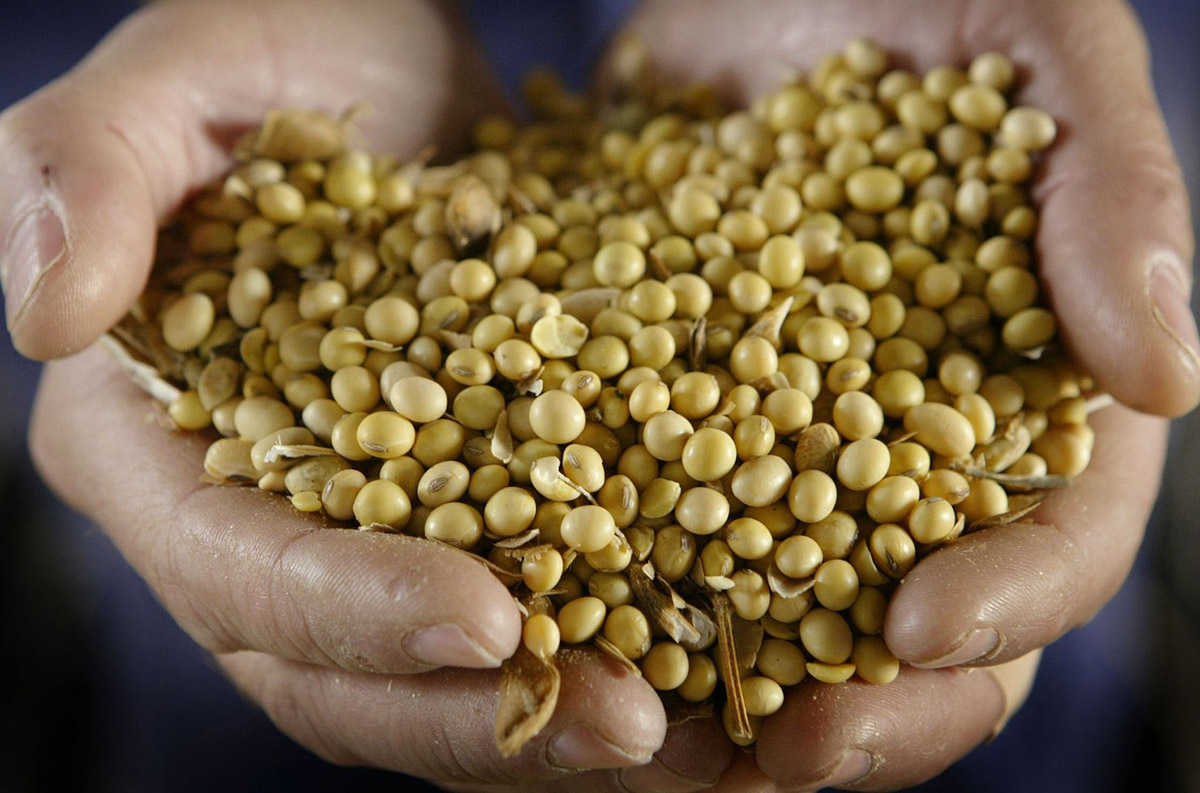

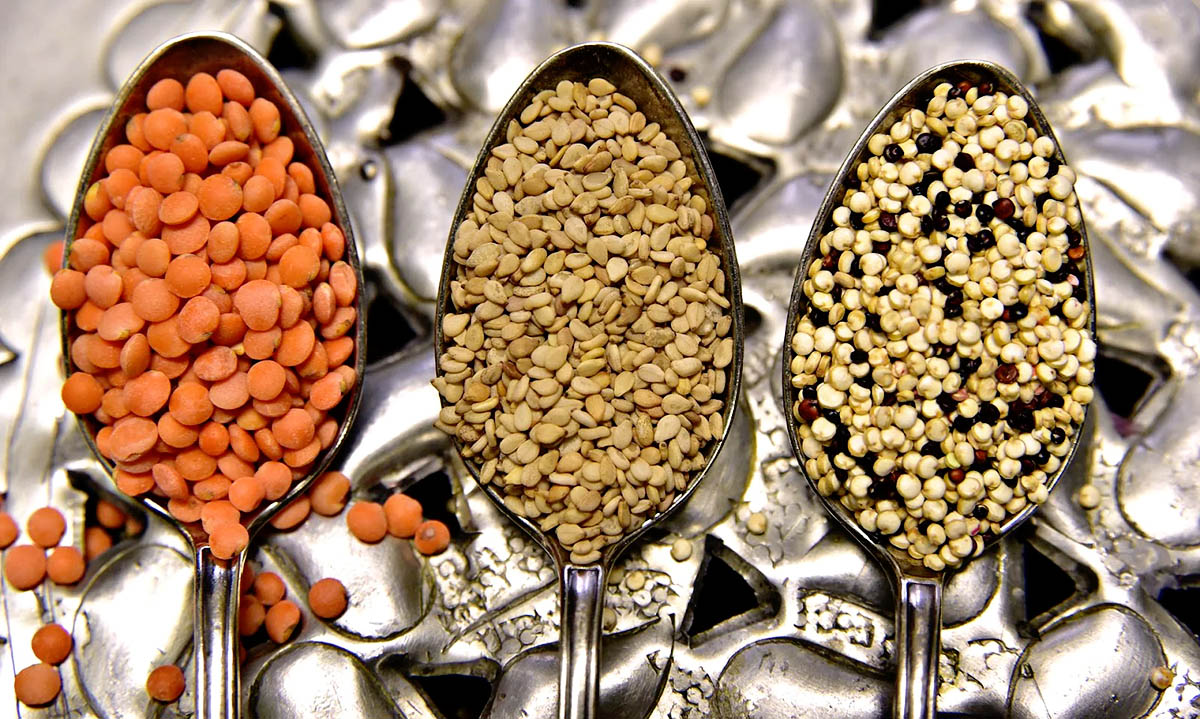



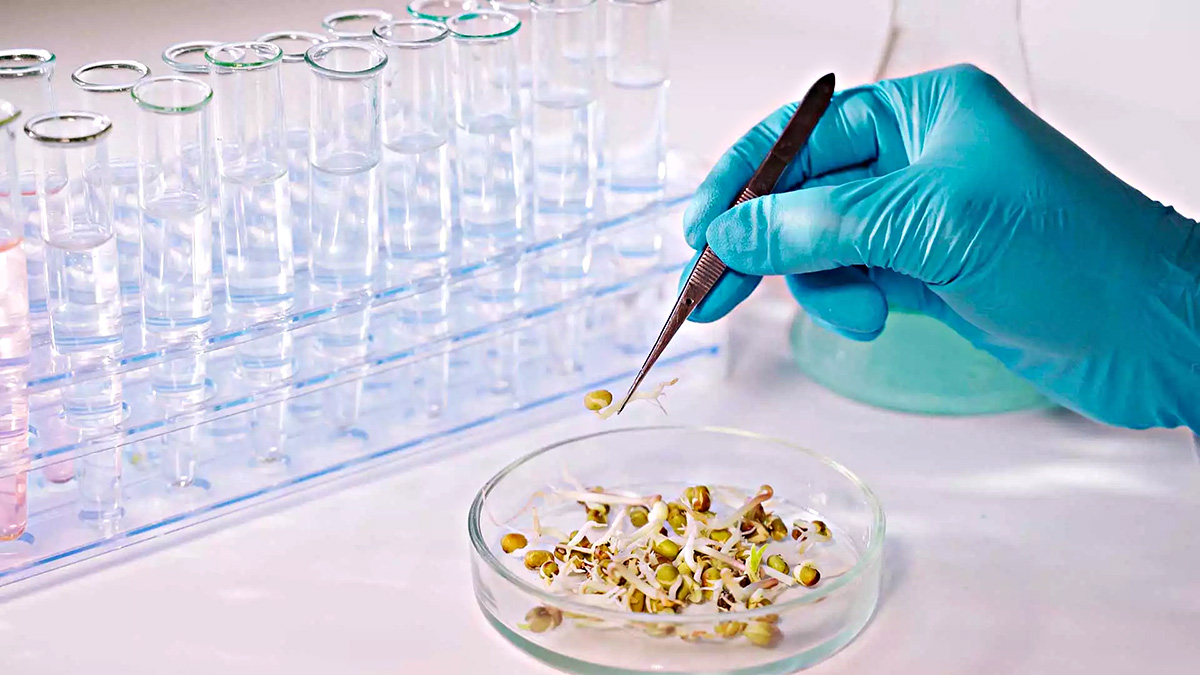
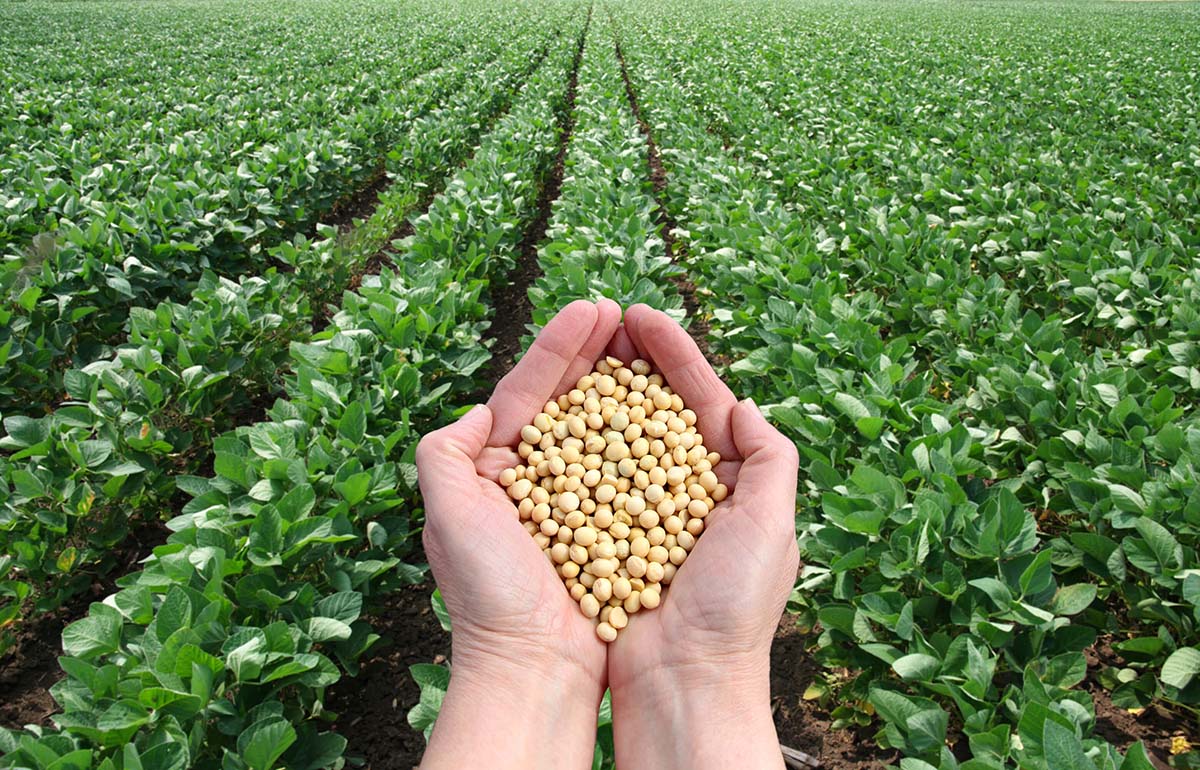
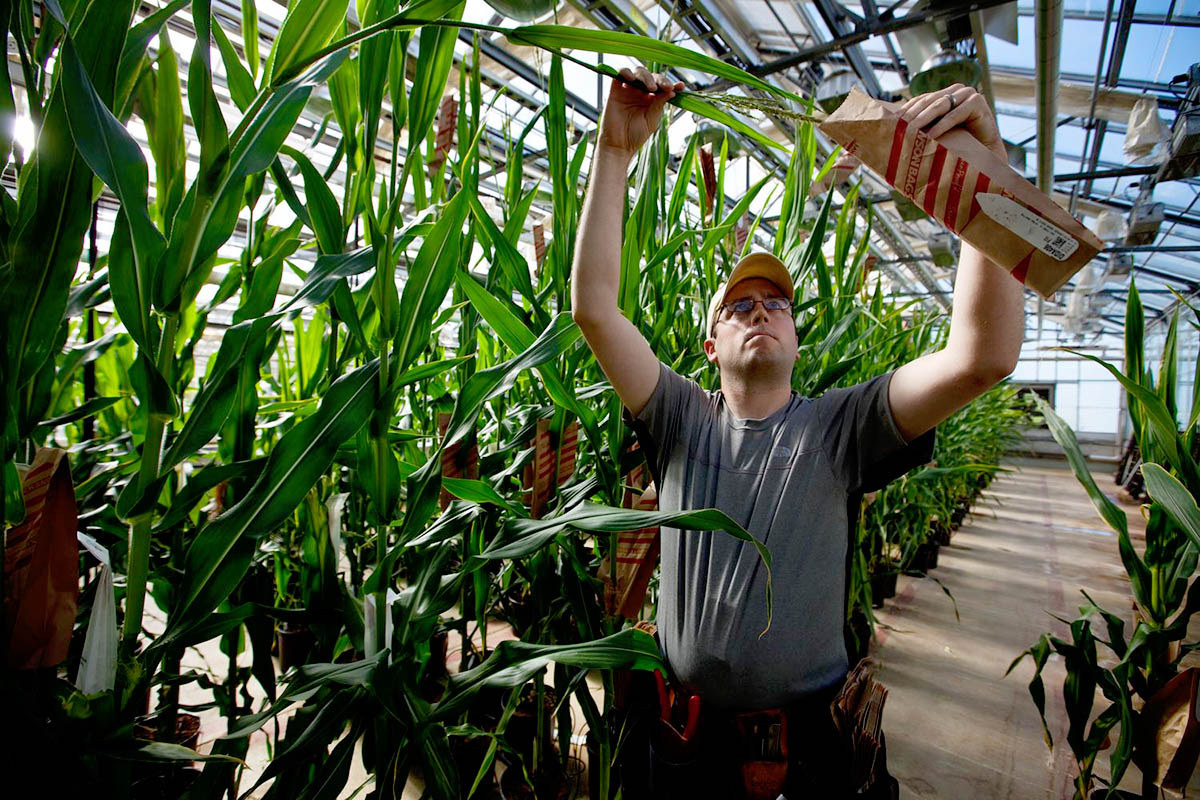





0 thoughts on “What Chemical Is In GMO Seeds”